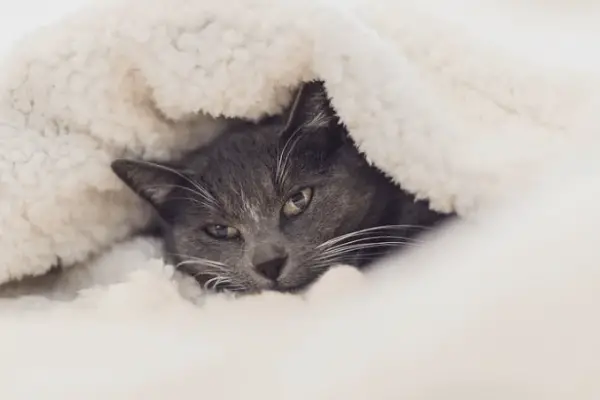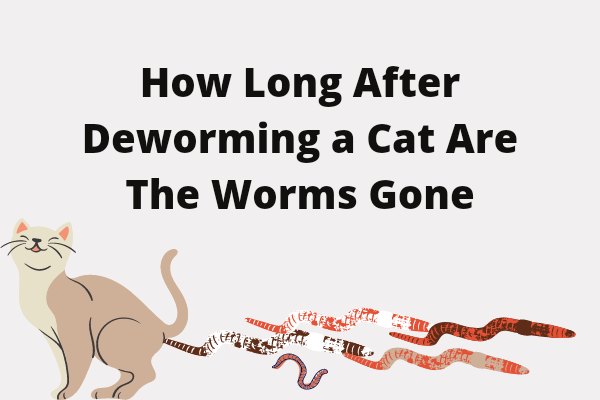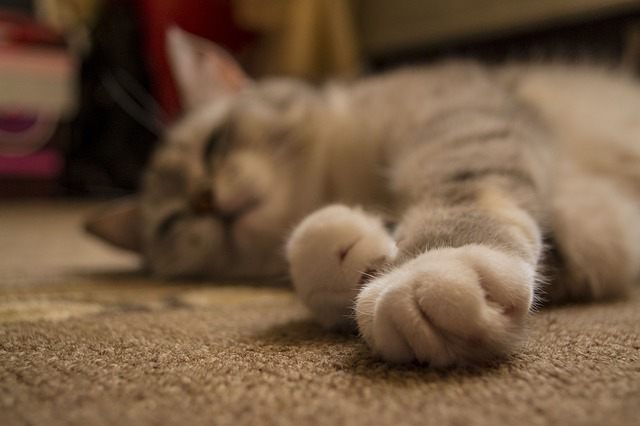How Long Does Cat Cold Last (8 Signs, Causes & Fix)

Just like humans, cats feel sick too, which brings up the question of how long does cat cold last, let’s find out together!.
Cat cold is what veterinarians refer to as upper respiratory tract infections.
In this post, we will be discussing the causes, symptoms, and treatment of cat cold (upper respiratory tract infections).
How Long Does Cat Cold Last
When a cat is exposed to an infectious cat cold agent, it goes through a 2 to 10 day incubation period before showing clinical indications.
The infection will normally last 7-10 days if it is simple, while symptoms may continue up to 21 days in severe cases.
Because the sick cat may be contagious to other cats for the duration of the infectious period, you should keep an infected cat away from other cats.
If your cat has been suffering from cold symptoms for more than four days and shows no signs of recovery, consult your veterinarian.
How do cats get cat colds
URI in cats is caused by viruses and bacteria that are very infectious.
Contagious particles will be shed by an infected cat in saliva or secretions from the nose or eyes.
Susceptible cats can get the disease through direct contact with an infected cat or through environmental exposure to infectious secretions-contaminated things including food and drink bowls, litter boxes, toys, and bedding.
Because viruses and bacteria only persist for a short time in the environment and are easily killed by adequate cleaning, the majority of illnesses are linked to direct contact.
Causes of cat colds
There are a lot of things that cause cat colds (upper respiratory tract infections) but here are the two main causes:
- Virus
- Bacteria
Let me explain…
Feline herpesvirus type-1 (also known as feline viral rhinotracheitis or FVR) and feline calicivirus (FCV) are the most common viruses that cause upper respiratory infections in cats.
While Bordetella bronchiseptica (B. bronchiseptica) and Chlamydophila felis are the most common bacteria that cause upper respiratory infections in cats (C. felis).
Cat cold symptoms
Here are the most common cat cold symptoms you should know:
1. Runny nose
A runny nose is one of the most common clear symptoms of a cat cold and should never be ignored.
A mucus release from the nostrils causes a runny nose. It’s caused by an overabundance of nasal mucous.
Anything that irritates or inflames the nasal tissues might induce a runny nose.
There are a variety of reasons for a runny nose that aren’t related to sickness. Cold exposure, scorching temperatures, and exercise are all examples.
Excessive outflow from the nose and nasal passageways, ranging from clear fluid to thick mucus.
2. Frequent sneezing
Frequent sneezing is one of the first signs of cat cold, and if sneezing continues don’t ignore it.
It may be straightforward to determine the source of your kitten’s sneezes, or it may require assistance from your veterinarian.
Upper respiratory infections (URIs) are prevalent in kittens, especially if the kitten was discovered outside or comes from a high-density place like a shelter or cattery.
Viruses, bacteria, fungus, or a combination of pathogens can cause these diseases, which are generally very infectious.
3. Swollen or watery eyes
Watery eyes are a sign that your cat is unwell and this can be caused by viruses or bacterial.
4. Lack of appetite
Loss of appetite occurs because mucus blocks the cat’s nose due to the running nose.
This blockage prevents the cat from getting the real smell of the food.
When a cat can’t get the smell of any food, the cat can’t have the zeal to eat such food.
Therefore, it is important that you always clean the cat’s nose with warm water and don’t rub too hard to avoid irritation.
5. Lethargy
Tiredness might have a variety of reasons that aren’t related to sickness like cat colds.
Lack of sleep, excessive (above-average) activity during the day, exercise, a large meal, pregnancy, aging, or prescription side effects are all examples.
Sleepiness, tiredness, and sluggishness are all symptoms of lethargy. This sluggishness might be physical or psychological.
Lethargic cat is a term used to describe cats who exhibit these symptoms.
6. Weight loss
The weight loss that occurs during cat cold is due to the fact that the cat loses appetite to eat.
7. Excessive coughing
Coughing is a minor symptom of a cat cold, which also shouldn’t be ignored.
8. Fever
A fever is defined as a body temperature that is higher than usual. Hyperthermia is another term for a high temperature in cats.
Fever is a common symptom among cats with cat colds, which shouldn’t be ignored.
Read more: 17 Most Common Symptoms Of Worms In Cats You Should Know.
Kitten cold symptoms
Kittens are more prone to picking up a cat cold because they have an immature immune system which makes them venerable.
Here are the symptoms of cat cold in kittens:
- Runny eyes
- Stuffy nose
- Coughing
- Fever
- Shriving
- Sneezing
- Loss of appetite
How to treat a cat with a cold
Antibiotics will not treat the virus but will help cure or prevent secondary infection.
However, cats with colds can be given an antibiotic liquid known as doxycycline, as this can help them fight the cause of the cold.
You can add a few drops of saline nasal spray on a cotton bud and gently tap it on the cat’s nose, this will help the cat to sneeze out mucus blocking the nose.
Ascertain that she has a comfortable, warm place to relax.
Use a moist towel to clean her face as needed to eliminate any crusting around her nose or eyes.
If necessary, artificial tears might be used to flush her eyes. A humidifier can aid in the relief of inflamed airways.
Warm her meal to make it smell better. Your cat’s sense of smell may be affected by congestion, making her less interested in her food.
Ways to care of cats with colds
Here are some common ways to care for a cat with a cold:
- Use a clean dump towel to clean the watery discharge in the eyes.
- Clean the discharge on the cat nose with a clean towel with warm water.
- Make sure the cat forearm and paw is always clean since they use it to wipe their running nose.
- Make sure you use different hand towels to clean the eyes and nose to avoid spreading the bacteria.
- Always deep the hand towels in warm water.
- Don’t rub too hard on the cat nose or eye to avoid irritation.
- Make sure your cat is drinking to avoid dehydration.
- Make sure you keep the cat groomed, because they cat can’t groom to avoid more fur ingestion.
- Always finish the prescription by your veterinarian even if the cat is already feeling better.
Do cat colds go away on their own
For a cat with a strong immune system, cat colds symptoms will go away on their own between 8 and 13 days.
However, problems such as a subsequent bacterial infection or pneumonia may occur in certain cats during these 8 and 13 days.
This might result in yellow-green discharge from the eyes or nose, as well as severe congestion that prevents your cat from smelling or tasting.
Cat has a cold sneezing
If a cat has cold sneezing there are basically two ways to help the cat at home if you don’t have access to the vet.
1. Take the cat to the bathroom and get the cat steamed up or warmed up for a short while under low temperature.
2. Offer warm food to the cat as this can help ease the cat’s respiratory tract and help relieve the cat.
Read more: How Long After Deworming a Cat Are The Worms Gone.
When do you take a cold cat to the veterinarian
Your cat does not need to see your veterinarian if she is merely sneezing with some clear discharge but otherwise appears healthy.
However, you need to see the veterinarian when you notice any of the following signs with constant sneezing:
- Ulcer on the tongue.
- Ulcer on the nose area.
- Difficulty breathing
- Frequent depression.
- Complete lethargy.
- Regular cough
How to prevent cat cold
Since cat cold is mainly caused by viruses or bacteria, here are some common ways to prevent cat cold:
- Vaccination against any feline diseases.
- Keep your cats indoors.
- Avoid your cat coming in contact with infected cats.
- Keep your cat surroundings clean as much as possible.
- Offer immune booster to your cat with the approval of your veterinarian.
- Allow adequate ventilation in your cat living space.
- Keep your cat playing toys or materials away from open outdoors.
- Avoid keeping wet surfaces around your cat living area.
Wrap up
Most cats may be treated symptomatically at home if they have a simple upper respiratory infection.
If your cat develops a purulent eye discharge, your veterinarian may prescribe an eye medicine.
Although antibacterial medications are ineffective against viral infections, broad-spectrum antibiotics may be recommended to prevent subsequent bacterial infections from aggravating the condition, especially in kittens.
Antibiotics that are efficient against Bordetella and Chlamydophila will be utilized to treat primary bacterial upper respiratory infections caused by these bacteria.




![How To Know If Cat Has Parasites [9 Signs Explained] How To Know If Cat Has Parasites](https://petcreeks.com/wp-content/uploads/2023/04/How-To-Know-If-Cat-Has-Parasites-768x555.jpg)

![10 Signs of Depression in Cats [Causes & Tips] Signs of Depression in Cats](https://petcreeks.com/wp-content/uploads/2021/07/Signs-of-Depression-in-Cats.jpg)